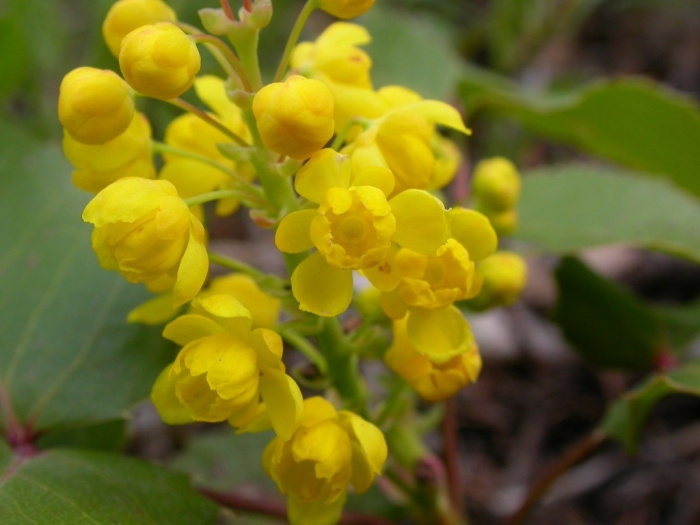Creeping Barberry
(Mahonia repens)
Creeping Barberry (Mahonia repens)
/
/

Matt Lavin from Bozeman, Montana, USA
CC BY-SA 2.0












































































Estimated Native Range
Summary
Creeping Barberry is valued for its adaptability and year-round interest, making it a favorite for natural landscaping, drought-tolerant gardens, and wildlife habitats. It serves as an excellent low-water ground cover, especially in shaded areas or under oak trees where irrigation might harm mature trees. Its foliage and berries are deer-resistant, which is beneficial in areas with high deer populations. In cultivation, it performs well in a range of light conditions, from full sun to full shade, and prefers well-drained soils. While it is drought-tolerant once established, it benefits from occasional watering during prolonged dry spells. It is also frost-hardy and can withstand cold temperatures, making it suitable for a variety of climates.CC BY-SA 4.0
Plant Description
- Plant Type: Subshrub, Shrub
- Height: 2-3 feet
- Width: 2-4 feet
- Growth Rate: Slow
- Flower Color: Yellow
- Flowering Season: Spring, Winter
- Leaf Retention: Evergreen
Growth Requirements
- Sun: Full Sun, Part Shade, Full Shade
- Water: Low, Medium
- Drainage: Fast, Medium
Common Uses
Bank Stabilization, Bee Garden, Bird Garden, Border Plant, Butterfly Garden, Deer Resistant, Drought Tolerant, Edible*Disclaimer: Easyscape's listed plant edibility is for informational use. Always verify the safety and proper identification of any plant before consumption., Erosion Control, Fire Resistant, Fragrant, Groundcover, Hummingbird Garden, Low Maintenance, Rabbit Resistant, Rock Garden, Showy Flowers, Street Planting
Natural Habitat
Understory of coniferous forests and forest edges, including regions with pine dominance
Other Names
Common Names: Creeping Mahonia, Creeping Oregon Grape, Prostrate Barberry
Scientific Names: , Mahonia repens, Berberis repens, Berberis aquifolium var. repens, Berberis aquifolium subsp. repens, Berberis aquifolium f. repens, Mahonia pumila, Berberis pumila, Berberis amplectens, Berberis nana
GBIF Accepted Name: Mahonia repens (Lindl.) G.Don